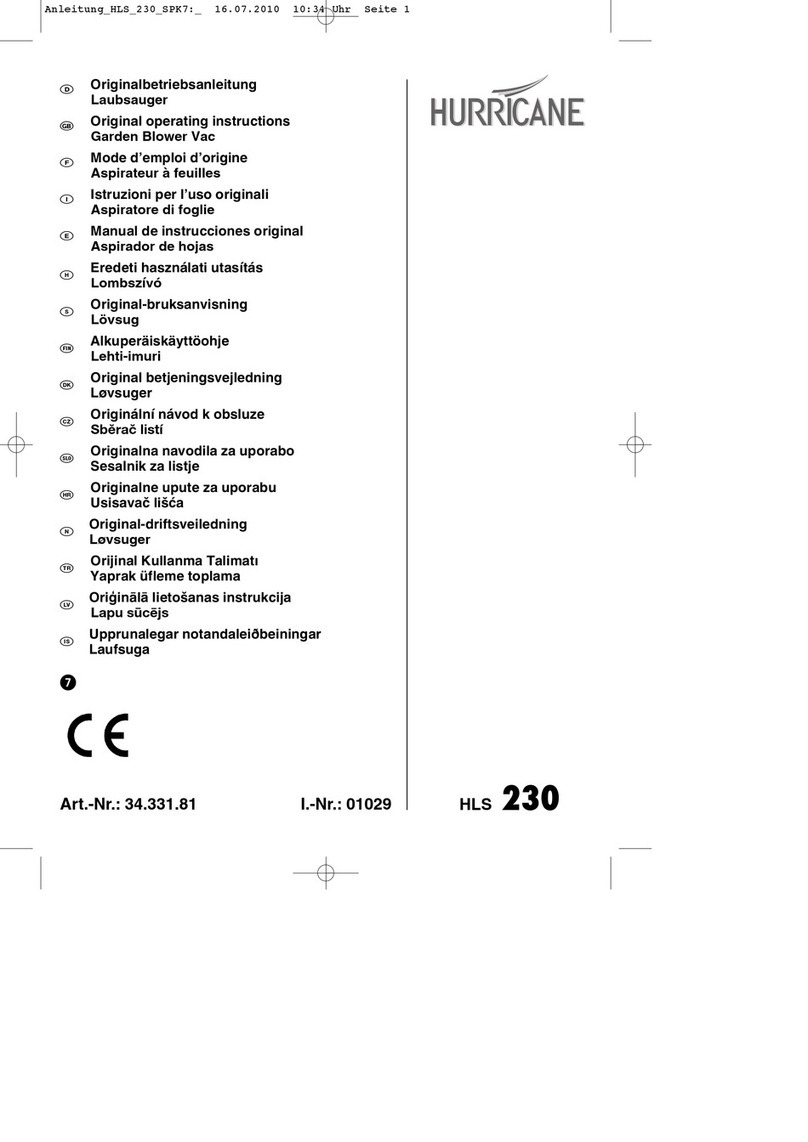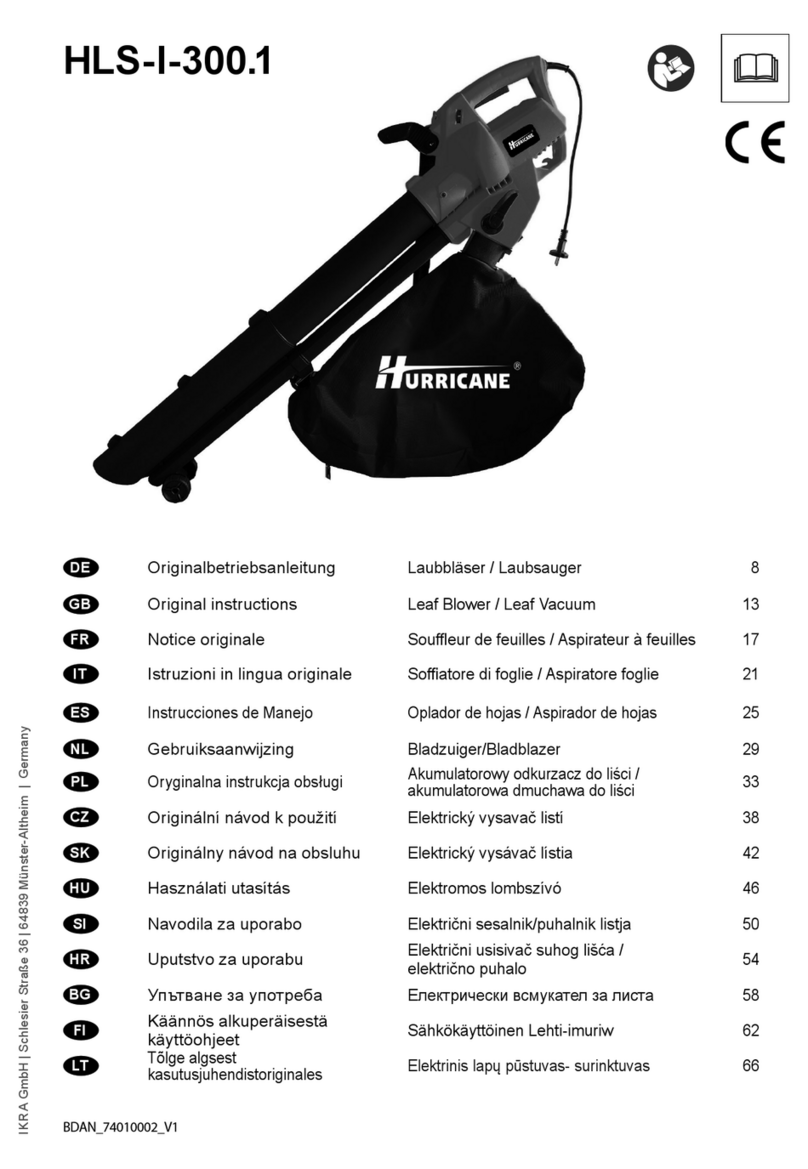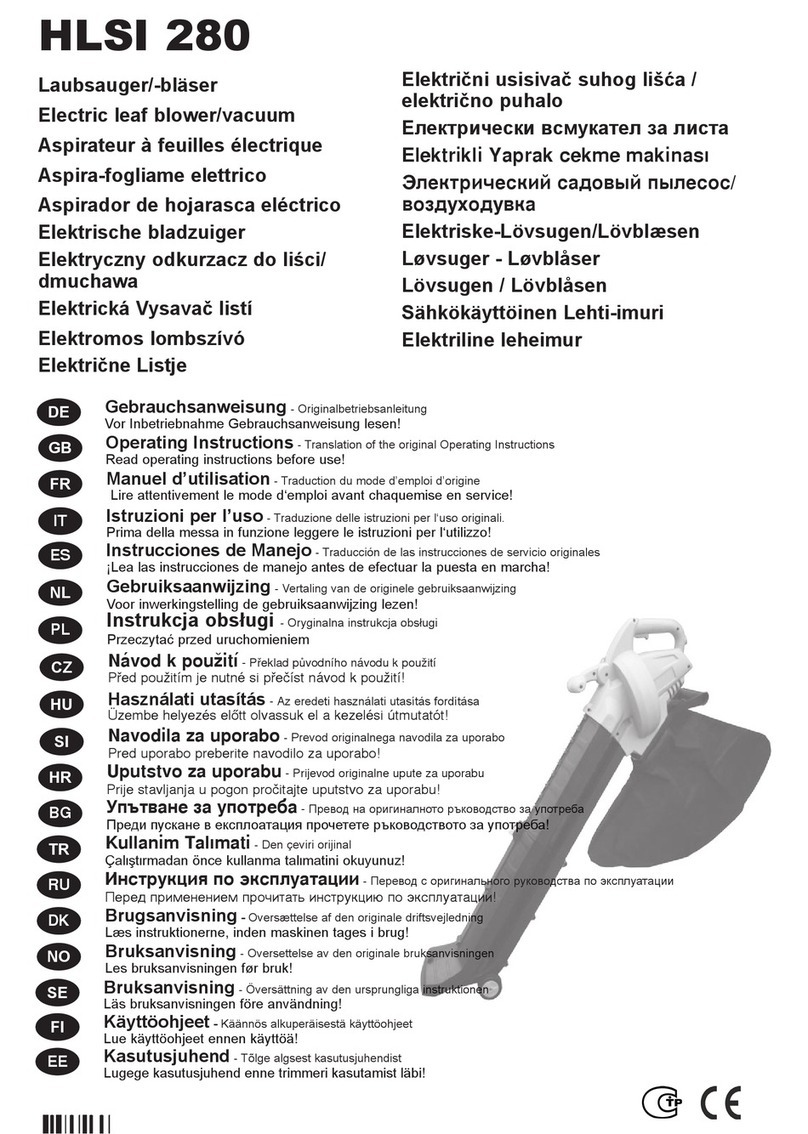
4 Operator’s Manual
Safety Hurricane Power
SAFETY
Operator Training Required
•Read the Operator’s Manual and other training
material. If the operator or mechanic cannot read
English, it is the owner’s responsibility to explain
this material to them. This publication is available
in other languages.
•Become familiar with the safe operation of the
equipment, operator controls, and safety signs.
•All operators and mechanics should be trained.
The owner of the machine is responsible for train-
ing the users.
•Never let children or untrained people operate or
service the equipment. Local regulations may re-
strict the age of the operator.
•The owner/user can prevent and is responsible
for accidents or injuries occurring to themselves,
other people, or property.
•Train operators on the machine in an open, unob-
structed area under the direction of an experi-
enced operator.
Preparation
•Evaluate the terrain to determine what accesso-
ries and attachments are needed to properly and
safely perform the job. Only use accessories and
attachments approved by the manufacturer.
•Wear appropriate clothing including hard hat,
safety glasses and hearing protection. Tie back
long hair, remove loose clothing or jewelry that
may get tangled in moving parts.
•Inspect the area where the equipment is to be
used and remove all objects such as rocks, toys,
etc. which can be thrown by the machine.
•Use extra care when handling gasoline and other
fuels. They are flammable and vapors are explo-
sive.
•Allow engine to cool down before fueling.
a. Use only an approved container.
b. Never remove gas cap or add fuel when en-
gine is running. Do not smoke.
c. Never refuel or drain the machine indoors.
•Check that the operator’s presence controls,
safety switches and shields are attached and
functioning properly. DO NOT operate unless
they are functioning properly.
Operating Safely
•NEVER run an engine in an enclosed area where
dangerous carbon monoxide fumes can collect.
•Only operate in good light, keeping away from
holes and hidden hazards.
•Be sure all drives are in NEUTRAL and parking
brake is ENGAGED before starting engine. Only
start engine from the operator’s position.
•Slow down and use extra care on hillsides. Be
sure to travel in the recommended direction on
hillsides. For this machine, drive across hillsides,
not up and down. Turf conditions can affect the
machine’s stability. Use caution while operating
near drop-offs. DO NOT operate machine within
5 feet of an embankment or drop-off.
•Slow down and use caution when making turns
and when changing directions on slopes.
•NEVER operate with the shields, or other guards,
not securely in place. Be sure all interlocks are
attached, adjusted properly, and functioning
properly.
•Do not change the engine governor setting or
overspeed the engine. Operating the engine at
excessive speed can increase the hazard of per-
sonal injury and machine damage.
•Stop on level ground, engage parking brake,
close deflectors, and shut off engine before leav-
ing the operator’s position for any reason.
•Stop equipment and inspect impeller if an abnor-
mal vibration occurs. Make necessary repairs be-
fore resuming operations.
•Keep hands and feet away from the intake and
discharge.
•Look behind and down before backing up to be
sure of a clear path.
•Never carry passengers. Keep pets and bystand-
ers away.
































